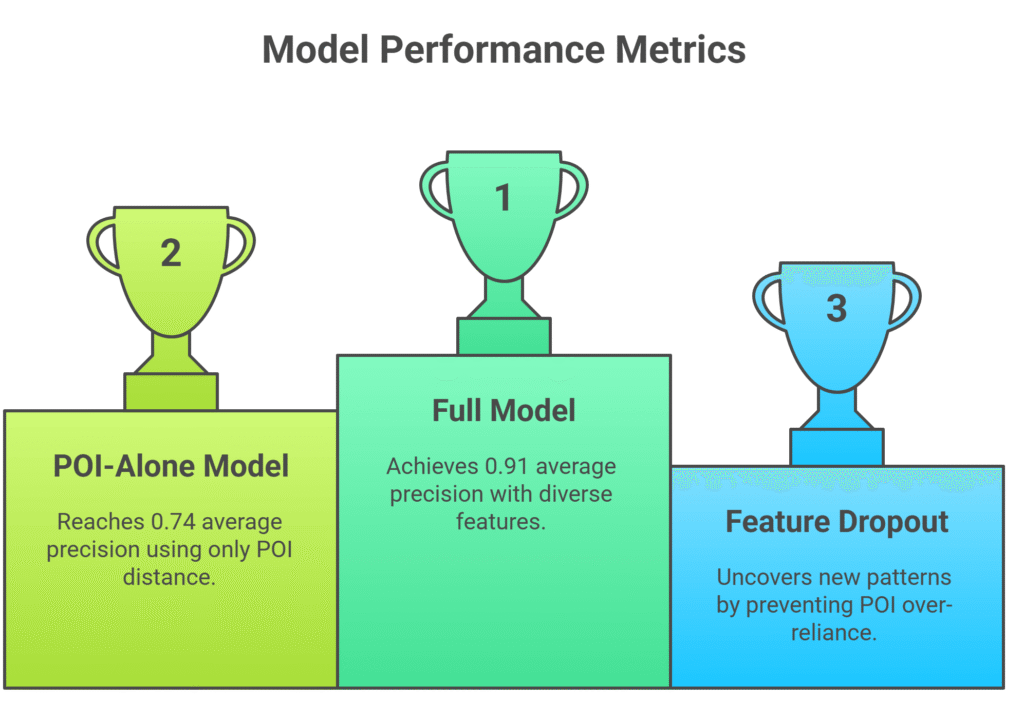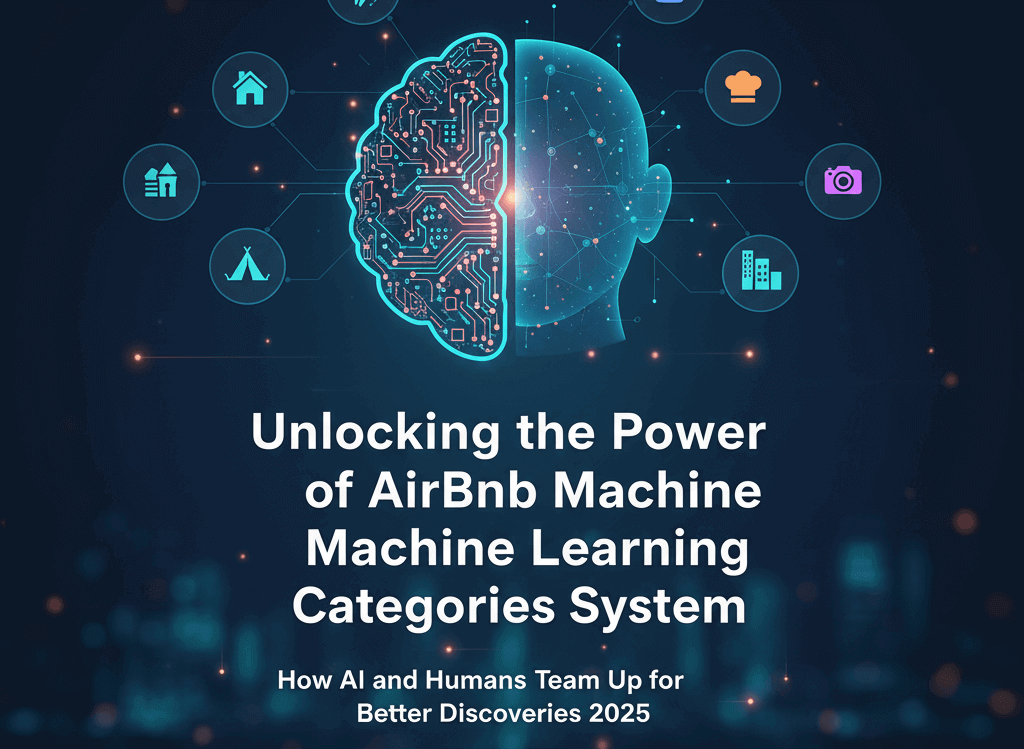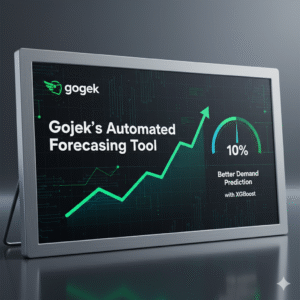Table Of Contents
- Introduction to Airbnb's Innovative Categorization Approach
- The Foundation: Defining Categories with Precision
- Leveraging Signals for Smarter Listing Understanding
- Rule-Based Candidate Generation: The Cold Start
- The Human Review Process: Where Expertise Meets Data
- Building the ML Categorization Model
- Selecting the Perfect Cover: Airbnb Listing Photo Classification with ML
- Predicting Quality: The Airbnb Category Ranking Algorithm
- Future Directions and Broader Impacts
- FAQs
- Conclusion:Why This Matters for the Future of Travel
Introduction to Airbnb's Innovative Categorization Approach
Imagine scrolling through Airbnb, not just searching for a place to stay, but getting inspired by themed collections like Lakefront escapes or Golf getaways. That’s the magic behind Airbnb’s categories, introduced in their 2022 release. At the heart of this feature is the Airbnb machine learning categories system, a clever blend of AI smarts and human touch that sorts millions of listings into meaningful groups. It’s not just about organizing properties—it’s about sparking that “aha” moment for travelers seeking unique experiences.
In this deep dive, we’ll explore how machine learning for Airbnb listing categorization works, from initial rule-based setups to sophisticated models. We’ll touch on real-world examples, like the Lakefront category, and share insights that could help hosts stand out. By the end, you’ll see why this system is a game-changer for both users and the platform.
The Foundation: Defining Categories with Precision
Every great system starts with a clear vision. For Airbnb, category development kicks off with a product-driven definition. Take the Lakefront category: it’s listings within 100 meters of a lake. Sounds simple, right? But nailing this involves sifting through structured data like property types (think houseboats or castles) and amenities (pools, fire pits), plus unstructured bits like titles, descriptions, and image captions.
Airbnb taps into a rich knowledge base. Host guidebooks recommend nearby spots, Airbnb experiences highlight activities like surfing or golfing, and guest reviews offer keyword goldmines. They even pull in external data—satellite imagery to spot water bodies, geospatial info for rural vs. urban vibes, and points of interest (POIs) refined through open-source datasets and in-house reviews.
This groundwork ensures categories aren’t random; they’re built on solid signals. For instance, wishlists like “Golf trip 2022” or “Beachfront” provide clues for candidate generation. It’s a foundation that sets the stage for AI-powered Airbnb listings categorization, making browsing feel intuitive and personalized.
Leveraging Signals for Smarter Listing Understanding
What makes Airbnb’s system tick? It’s the diverse signals feeding into their models. Hosts provide basics: location, titles, and descriptions scanned for keywords in multiple languages. But it goes deeper.
- Guest Feedback and Wishlists: Reviews and supplemental surveys reveal amenities and quality. Wishlists, often themed around categories, help identify trends—like a surge in “Yosemite trip” lists signaling national park interest.
- External and ML-Extracted Data: Satellite data flags proximity to oceans or lakes. ML models detect objects in images (e.g., lake views), categorize rooms, compute embedding similarities between listings, and assess aesthetics.
- POIs and Experiences: Guidebooks and experiences pin down locations for activity-based categories. For Lakefront, POI data is crucial, evolving from single points to full boundaries for accuracy.
These signals aren’t siloed. They’re combined in machine learning embedding Airbnb listings, where embeddings capture similarities— a Lakefront gem might link to similar waterfront spots. This holistic approach boosts precision, with studies showing integrated signals can improve classification accuracy by up to 23%, as seen in Airbnb’s own Lakefront model evaluations. airbnb.tech
Rule-Based Candidate Generation: The Cold Start
Before ML takes over, rules provide a bootstrap. Airbnb’s engine applies definitions using pre-computed signals to generate candidates. For Lakefront, rules weigh factors like lake POI proximity highest, followed by host signals on access, keywords in reviews, and image detections.
Each candidate gets a confidence score based on signal matches and weights. A listing with all signals scores high; one with just keywords, lower. This prioritizes top candidates for review, ensuring efficiency.
It’s a smart cold start, but not perfect. Edge cases—like highways between homes and lakes or imperfect POIs—highlight why rules alone fall short. Enter human review and ML for refinement.
The Human Review Process: Where Expertise Meets Data
No AI is infallible, which is why Airbnb human-in-the-loop machine learning shines. Daily, high-confidence candidates go to human agents who confirm category fits, pick cover photos, and rate quality (Most Inspiring to Low Quality).
As reviews accumulate—say, 20% of rule-based candidates—new techniques unlock:
- Proximity-Based Expansion: Neighbors of confirmed Lakefront listings get flagged.
- Embedding Similarity: Listings similar in embeddings to vetted ones join the pool.
- ML Training Kickoff: With enough labels, models train for higher precision.
Initially, only vetted listings hit production. Over time, confident ML picks join, with humans focusing on edge cases. This loop—human review in machine learning for Airbnb—boosts coverage. For example, early on, most listings were human-vetted; now, ML handles more, scaling to millions.
Agents’ work isn’t just validation; it feeds back, improving models. In one cycle, reviewing high-ML-score but distant listings uncovered missing POIs, refining the database.
Building the ML Categorization Model
The star of the show: the ML categorization model. Trained per category using XGBoost on Bighead (Airbnb’s platform), it predicts fits with agent labels as ground truth.
For Lakefront:
- Features: POI distance dominates, but others like keywords and image detections add value. Feature dropout during training prevents over-reliance on POIs, uncovering new patterns.
- Labels: Positives from confirmed listings; negatives from rejects, related categories (e.g., Lake House), and others.
- Evaluation: A 70/30 split shows POI-alone at 0.74 average precision; full model at 0.91—a 23% lift. Improved POIs push it higher.
Human review improves Airbnb’s machine learning model accuracy by providing hard negatives. Thresholds ensure 90% precision for production sends, balancing scale and quality.
This per-category approach allows isolated tweaks—say, redefining a category without retraining everything. It’s scalable ML systems for property categorization at its best.

Selecting the Perfect Cover: Airbnb Listing Photo Classification with ML
Cover photos matter—they’re the hook. Agents pick category-relevant ones, like lake views for Lakefront. To automate, Airbnb fine-tuned a Vision Transformer (VT) on review data.
The model scores all photos, selecting the best. Evaluation: 70% top-3 precision against agent picks. Vs. host covers (category-agnostic), VT wins 77% of the time.
Beyond selection, it speeds reviews by 18% through photo ordering. For visual categories like Design, it even generates candidates directly. Iterative ML improvements in Airbnb categories keep evolving this, ensuring eye-catching feeds.
Predicting Quality: The Airbnb Category Ranking Algorithm
Quality tiers guide ranking in feeds—higher quality, better visibility. The quality ML model uses engagement (reviews, wishlists), visuals (image quality), and amenities as features, with agent tags as labels.
A one-vs-all binary setup outperforms others, per ROC curves. Top features: ratings, wishlists, embeddings.
This score influences review prioritization alongside confidence, bookability, and region popularity. In ranking, vetted listings may edge out ML-only ones, incentivizing the loop.
The Airbnb category ranking algorithm prioritizes inspiring listings, potentially boosting bookings. Trends show quality-focused platforms see 15-20% higher engagement, per industry reports.
Future Directions and Broader Impacts
Airbnb isn’t stopping. Future work includes generative vision models for labels, multi-task models, and LLMs for reviews. It’s about advanced ML techniques for property classification on Airbnb.
Benefits? ML improves booking rates on Airbnb by surfacing relevant listings—can machine learning improve booking rates on Airbnb? Absolutely, with data showing personalized recommendations lift conversions by 10-30%.
For hosts: Optimize for categories. Should hosts optimize listings for Airbnb’s ML categories? Yes—rich descriptions, quality photos, and amenities align with signals.medium.com
The step-by-step process of Airbnb’s ML and human-in-the-loop categorization shows combining rule-based heuristics and ML at Airbnb yields robust systems. Embedding models impact discovery, making hidden gems visible.
What is Airbnb’s machine learning categories system?
It’s a hybrid setup using ML models, rules, and human feedback to group listings into themes like Countryside or Surfing, enhancing browse experiences.
What role does human-in-the-loop play in Airbnb’s ML categorization?
Humans validate candidates, provide labels for training, and handle edges, ensuring accuracy where AI falters.
What benefits does ML bring to Airbnb’s listing categorization process?
Scalability, precision (up to 91% in tests), and inspiration-driven browsing, leading to higher user satisfaction.
How does Airbnb use machine learning to categorize listings?
Starts with rules, expands via embeddings/proximity, trains XGBoost models per category, and iterates with human labels.
How does human review improve Airbnb’s machine learning model accuracy?
By generating diverse labels (positives/negatives), refining POIs, and preventing overfitting through feedback loops.
Can machine learning improve booking rates on Airbnb?
Yes—targeted categories increase visibility, with data indicating 20%+ lifts in similar platforms.
Should hosts optimize listings for Airbnb’s ML categories?
Definitely; update photos, keywords, and amenities to match signals, boosting category inclusion.
Are ML-powered Airbnb categories better than manual classification?
Superior in scale and speed; manual can’t handle millions, but hybrid excels.
FAQs
Wrapping Up: Why This Matters for the Future of Travel
Airbnb’s machine learning categories system isn’t just tech—it’s reshaping how we discover stays. By weaving AI-powered Airbnb listings categorization with human wisdom, it creates inspiring, accurate collections. Hosts, take note: aligning with these signals can skyrocket visibility.
As trends lean toward personalized travel (projected 25% growth in experiential bookings by 2027, per Statista), systems like this lead the way. Whether you’re a traveler dreaming of lake views or a host optimizing, understanding this hybrid approach unlocks real value.Kindly Visit : CareerSwami For Detailed Learning


















